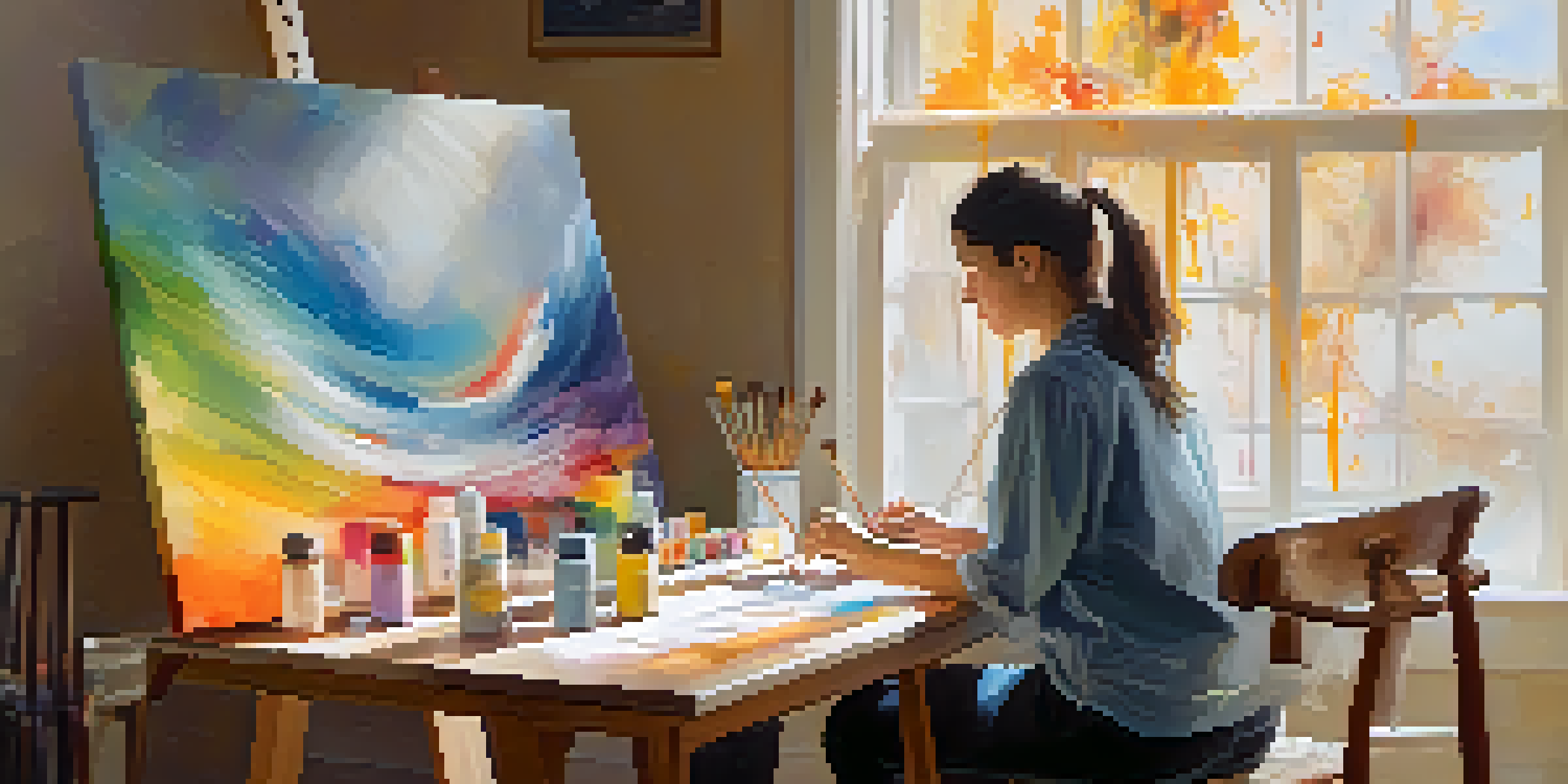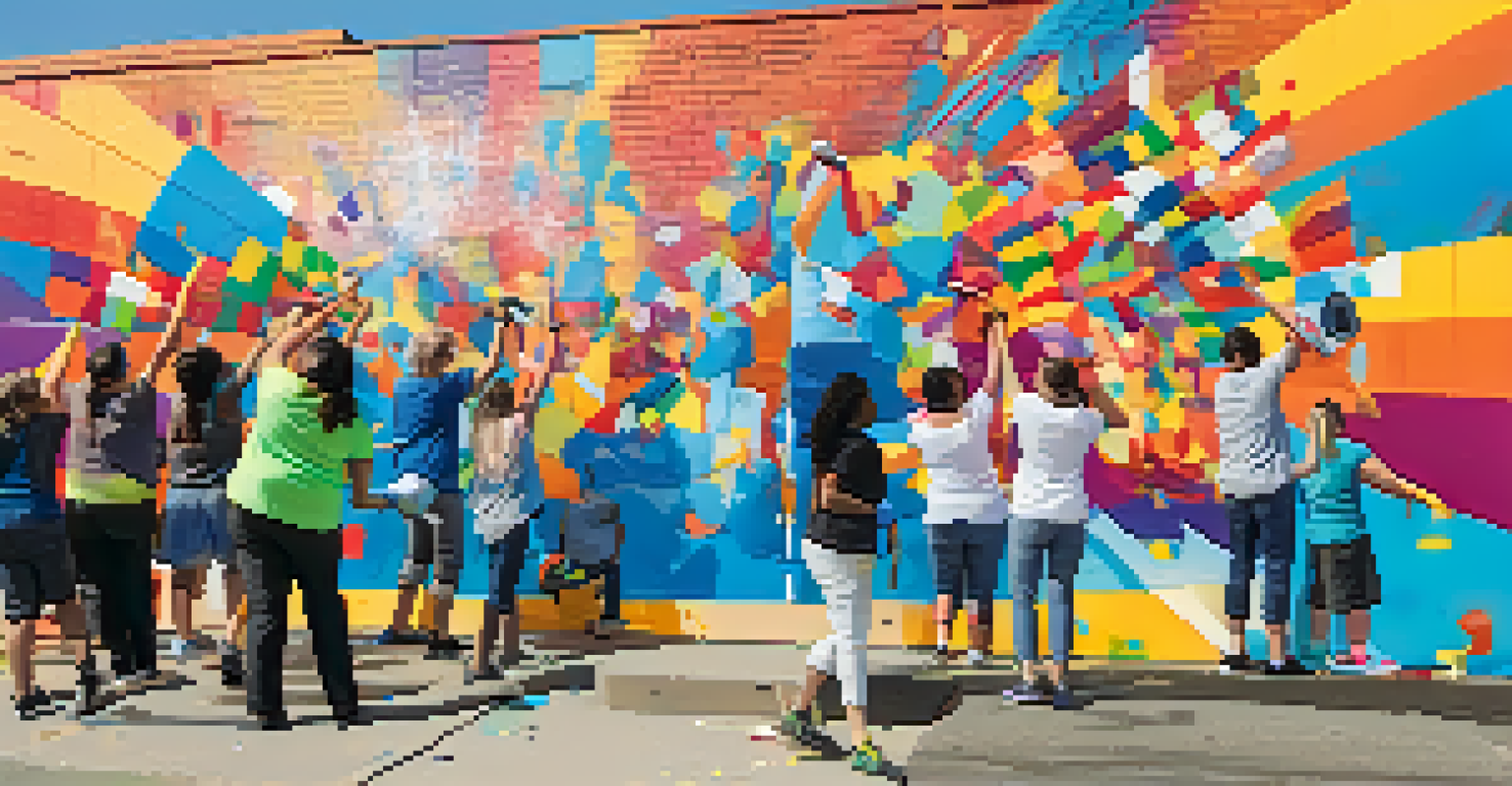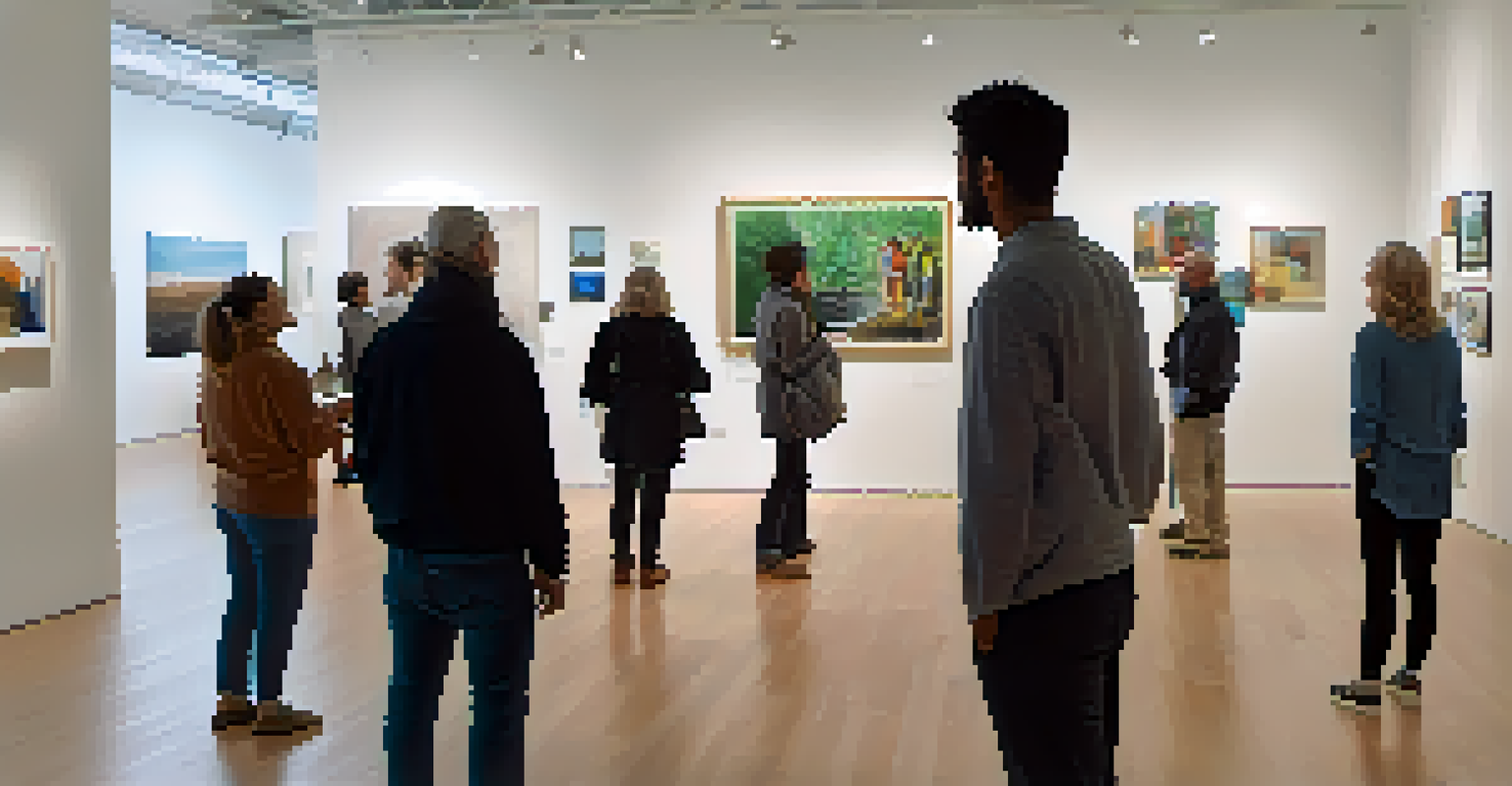Art as a Tool for Promoting Mental Health Awareness

Understanding the Link Between Art and Mental Health
Art has long been recognized as a powerful medium for expression, and it plays a vital role in mental health. It allows individuals to convey feelings that might be too difficult to express in words. This connection can significantly aid in understanding and processing complex emotions, helping to bridge the gap between feelings and expression.
Art is not a thing; it is a way.
Incorporating art into mental health discussions can demystify the subject, making it more relatable. For instance, a painting depicting anxiety can resonate with someone who feels similarly, creating a sense of shared experience. This shared connection can reduce stigma and open the door for dialogue about mental health struggles.
Furthermore, art encourages exploration and self-discovery, which are essential for mental well-being. Engaging with various forms of art can inspire individuals to reflect on their own experiences, fostering a deeper understanding of themselves and their emotional landscape.
Art Therapy: A Professional Approach to Healing
Art therapy is a structured form of therapy that utilizes artistic expression to promote healing and mental well-being. A trained art therapist guides individuals through creative processes, allowing them to explore their emotions in a safe environment. This therapeutic approach has been shown to be effective in addressing various mental health issues, including depression and anxiety.

During art therapy sessions, clients might create paintings, drawings, or sculptures, using these mediums to express feelings that are often hard to articulate. For example, someone dealing with grief may create a piece that visually represents their loss, facilitating a conversation about their feelings. This process can be transformative, providing insights and coping mechanisms.
Art Enhances Mental Health Expression
Art serves as a powerful medium for individuals to express and process complex emotions that are often difficult to articulate.
As individuals engage in art therapy, they often find that the act of creating itself can be therapeutic. The focus required to create art can serve as a form of mindfulness, drawing attention away from stressors and promoting relaxation. This combination of creativity and therapeutic guidance can lead to profound emotional breakthroughs.
Community Art Projects: Building Connections
Community art projects serve as a fantastic way to raise mental health awareness while fostering a sense of belonging. These initiatives bring together individuals from diverse backgrounds to collaborate on artistic endeavors. This not only provides a platform for self-expression but also cultivates community ties and support networks.
Creativity takes courage.
For instance, a community mural project can allow participants to share their stories and experiences related to mental health. As they work together to create a mural, they can discuss their personal journeys, encouraging empathy and understanding among participants. This shared experience can break down barriers and promote mental health awareness in a tangible way.
Moreover, such projects can attract attention from the broader community, sparking conversations about mental health. When passersby see a mural dedicated to mental health, it can prompt questions and dialogue, further spreading awareness. The result is a ripple effect that fosters understanding and compassion within the community.
Art Exhibitions: Showcasing Mental Health Perspectives
Art exhibitions focused on mental health can serve as powerful platforms for raising awareness. By showcasing works that depict various mental health challenges, these exhibitions can highlight the realities faced by many individuals. This visibility not only educates the public but also validates the experiences of those living with mental health issues.
For instance, an exhibition featuring pieces created by individuals who have experienced mental health challenges can provide a space for their voices to be heard. Visitors may gain insights into the emotional struggles depicted through the art, fostering understanding and empathy. This connection can be eye-opening for those who may not have personal experience with mental health issues.
Art Therapy Promotes Healing
Structured art therapy utilizes creative expression under professional guidance to facilitate emotional exploration and healing.
Additionally, art exhibitions can ignite conversations around mental health, encouraging viewers to reflect on their own experiences and perceptions. This dialogue can contribute to reducing stigma and creating a more supportive environment for individuals dealing with mental health challenges.
The Role of Social Media in Art and Mental Health
In today's digital age, social media has become a vital tool in promoting mental health awareness through art. Platforms like Instagram and Pinterest allow artists to share their work with a global audience, showcasing pieces that address mental health themes. This accessibility can inspire others to engage with mental health topics creatively.
Social media also provides a space for artists to share their personal mental health journeys alongside their artwork. For example, an artist might post about their struggle with anxiety while sharing a piece that expresses that experience. This transparency can resonate with followers, fostering a sense of community and understanding among individuals facing similar challenges.
Moreover, hashtags related to mental health art can create online movements that raise awareness and encourage participation. By searching for these hashtags, individuals can discover a wealth of art that speaks to their experiences, providing both solace and connection. This virtual community can be an invaluable resource for those seeking support.
Art as a Means of Self-Expression and Coping
For many, creating art serves as a personal coping mechanism, allowing individuals to process their emotions in a constructive way. Whether it’s through painting, writing, or music, the act of creating can provide an outlet for feelings that may otherwise feel overwhelming. This self-expression can be incredibly therapeutic, leading to enhanced emotional resilience.
Consider a person who uses journaling as a way to cope with anxiety. By writing down their thoughts and feelings, they can better understand their triggers and develop coping strategies. This practice not only promotes self-awareness but also serves as a safe space to explore and release emotions.
Community Projects Foster Awareness
Collaborative community art projects help raise mental health awareness and build supportive connections among participants.
In essence, engaging in artistic activities can provide individuals with a sense of control over their mental health. As they express themselves creatively, they may find clarity and peace amidst chaos. This empowerment can transform their relationship with their feelings, turning art into a vital tool for healing.
The Future of Art in Mental Health Awareness
As we look to the future, the integration of art into mental health awareness is poised to expand even further. With emerging technologies, such as virtual reality and interactive art installations, the possibilities for creative expression are limitless. These innovations can create immersive experiences that allow individuals to explore and understand mental health in new ways.
Educational institutions are beginning to recognize the importance of incorporating art into mental health curriculum. By introducing students to the therapeutic benefits of art from a young age, we can foster a generation that values creativity as a tool for emotional expression and support. This proactive approach can lead to a more compassionate society.

Ultimately, the future of art in mental health awareness lies in collaboration and innovation. By partnering with mental health organizations, artists can create impactful projects that elevate awareness and understanding. As we continue to explore the intersection of art and mental health, we can look forward to a more inclusive and supportive world for all.